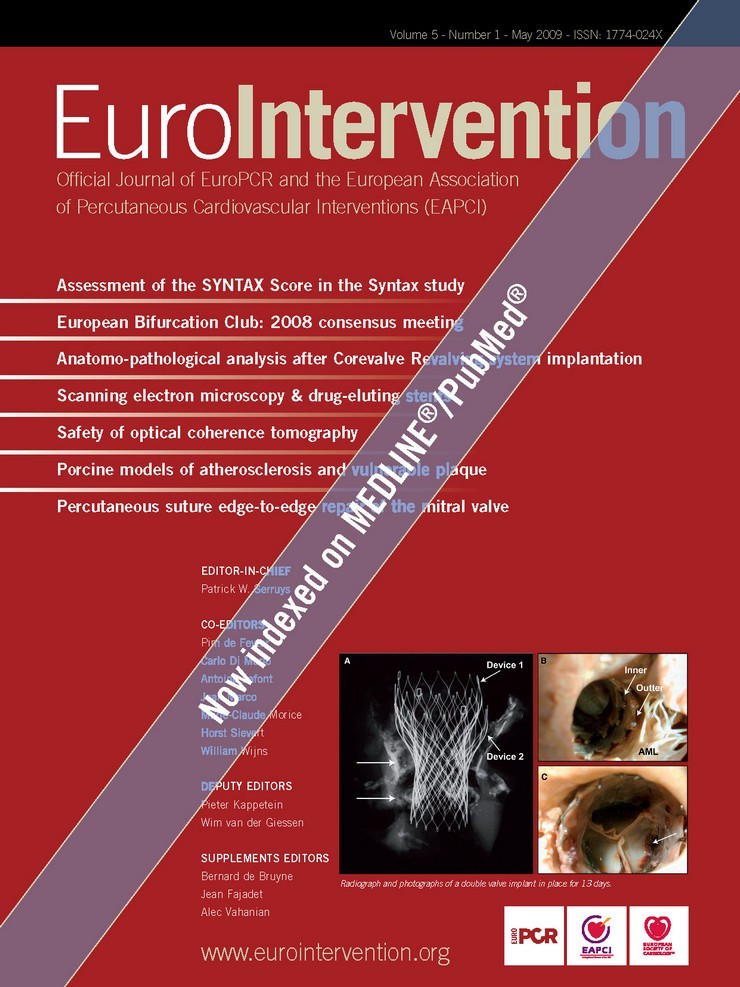Dear Colleagues,
We may be a young speciality in the springtime of our development, but already so many of our best and brightest have fallen.
I would like to join with my colleagues and offer my own remembrance of Hideo Tamai, whose memorial appears on the next few pages of our journal. His friends have paid him a wonderful tribute, so fitting for this remarkable personage, and I cannot resist adding a little anecdote of my own... of how – and where – I met Hideo for the first time.
It was in a bathroom in the Hilton hotel in Rotterdam while he was preparing a live demonstration for me, in vitro, using a glass of tap water to demonstrate the self expansion of the Igaki-Tamai stent. From that day on we alwaysshared great moments of hilarity together, even when faced, like we were one time, with a biodegradable implant that followed the balloon out into the main stem. Ultimately, likethe three other lesions we were treating, this lesion was successfully treated as well, and more than 10 years later, MSCT images prove patency of the stents, and the pioneering ideas of Hideo. He will be sorely missed.
A new volume begins
And so we begin our fifth volume of EuroIntervention. It is not so long ago we began, but in this short time we are proud of our many achievements, not the least of which is our indexing in Pubmed/MEDLINE. Today we can clearly begin to see just how many of our papers are being cited in other journals, leading us to have confidence that our expectation of a high and visible impact factor is well taken.
As you know, EuroIntervention is the official journal of the EAPCI and close collaborator of EuroPCR. We are part of the group of sub-specialities with an active and special representation within the European Society of Cardiology (ESC). But the integration of our work does not begin and end here. There has long been an interest shown on the part of the ESC to pay greater attention to the development of its sub-specialities, as is witnessed by the presence at our meetings of the Presidents of our parent association, and now, with our old friend Thomas Lüscher at the helm of the European Heart Journal, the ESC’s seminal publication, we see a desire – on his part which is echoed by our own – to further integrate the great capacities of all these ESC journals together.
Thomas Lüscher believes that “an important strategy of the new editorial team of the European Heart Journal is the creation of a tightly interconnected ESC Journal family that would also encompass EuroIntervention.” This is an idea that the editorial board of our journal and the European Heart Journal are trying to evolve; practically speaking, it is the concept of “manuscript sharing”, which would take place between all the journals of the ESC Journal family.
Essentially its workings would be simple and transparent, allowing authors to have the opportunity of seeing their article published in an appropriate journal with the shortest – and least redundant – decision making process and time possible. Eventually, when we have put the correct mechanisms in place, an author submitting to the European Heart Journal (EHJ) could be given the option that their manuscript might be considered by EuroIntervention in the case where EHJ cannot accept it. We would avoid the necessity of re-submission, we could share reviewer’s comments and we could maximise both the impact of our journals, and the very fluid lines between all sub-specialities within the umbrella of the ESC. We will keep you posted on how this develops.
Continuing growth
Right now we can make some announcements of what is actually happening with EuroIntervention today. With this issue we begin a stepped-up production schedule bringing you a new journal every six weeks.
Within the journal itself, we will be soon showcasing new educational initiatives with our totally revamped “How should I treat?” (HSIT) section, clearer, precise, pertinent. Also we will be launching a new special section, bringing you the latest technical development in our field from a European perspective. And remember, HSIT and our special medical writing session have become special sessions at this year’s EuroPCR!
Coming out at the same time as the May issue, we are also pleased to draw your attention to two new supplements – in addition to our increased publication frequency. The first, which we are sure will be a useful tool and add to the educational value of EuroPCR, is the abstracts of EuroPCR 2009, the second, which promises to be a reference in its subject area, is our special supplement on “Secondary Coronary Revascularisation” edited by Javier Escaned, Carlos Macaya and myself.
There is so much happening, so much to share with you all, and so much yet to happen... we look forward to your participating with us.

